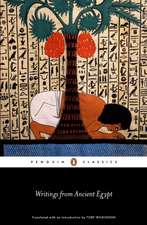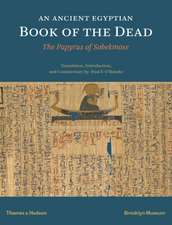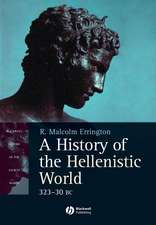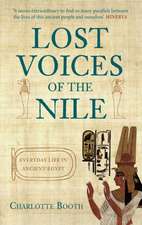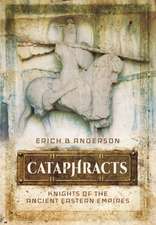The Invention of Time and Space: Origins, Definitions, Nature, Properties
Autor Patrice F. Dassonvilleen Limba Engleză Hardback – 11 oct 2016
The author's approach is based on two key ideas: The first idea is to seek the geo-historical origins of time and space concepts. A thorough investigation of a diversified archaeological corpus, allows him to draft coherent definitions; it furthermore gives clues as to whether time and space were discovered or invented. The second idea is to define the units before trying to define space and time.
The results presented here are unexpected: Time and space were not discovered in nature, but they were invented; time is not a phenomenon and space has no materiality; they are only concepts. This runs contrary to the opinion of most scientific and the philosophical authorities, although one would seek in vain for a theoretical validation of the conventional position. This book will provide much food for thought for philosophers and scientists, as well as interested general readers.
| Toate formatele și edițiile | Preț | Express |
|---|---|---|
| Paperback (1) | 579.02 lei 6-8 săpt. | |
| Springer International Publishing – 16 iun 2018 | 579.02 lei 6-8 săpt. | |
| Hardback (1) | 585.26 lei 6-8 săpt. | |
| Springer International Publishing – 11 oct 2016 | 585.26 lei 6-8 săpt. |
Preț: 585.26 lei
Preț vechi: 688.54 lei
-15% Nou
Puncte Express: 878
Preț estimativ în valută:
111.99€ • 119.76$ • 93.37£
111.99€ • 119.76$ • 93.37£
Carte tipărită la comandă
Livrare economică 18 aprilie-02 mai
Preluare comenzi: 021 569.72.76
Specificații
ISBN-13: 9783319460390
ISBN-10: 3319460390
Pagini: 150
Ilustrații: XVII, 176 p. 46 illus., 3 illus. in color.
Dimensiuni: 155 x 235 x 13 mm
Greutate: 0.45 kg
Ediția:1st ed. 2017
Editura: Springer International Publishing
Colecția Springer
Locul publicării:Cham, Switzerland
ISBN-10: 3319460390
Pagini: 150
Ilustrații: XVII, 176 p. 46 illus., 3 illus. in color.
Dimensiuni: 155 x 235 x 13 mm
Greutate: 0.45 kg
Ediția:1st ed. 2017
Editura: Springer International Publishing
Colecția Springer
Locul publicării:Cham, Switzerland
Cuprins
Introduction.- The Main Issues.- The Failure of Dialectics.- Reality, Concepts, and Models.- Origins of Time and Space.- Definitions and Nature of Time.- Definitions and Nature of Space.- Mathematical Properties of Time and Space.- Historical Overview of Time and Space.- First Consequences of Non-Existence.- Conclusion.- Specific Glossary.
Recenzii
“Patrice Dassonville’s book is useful in many ways. Time and space are ill-defined concepts that appear in everyday communication, science, textbooks, classroom discourse, and so on. Moreover, this book is a beautiful piece of intellectual work, which can be used by teachers to improve students’ critical thinking significantly.” (Ricardo Lopes Coelho, Science and Education, Vol. 26, 2017)
Notă biografică
Patrice Dassonville has a wide knowledge ranging from theoretical physics to business administration; he also has experience in teaching and in industrial engineering, and has worked in the USA and in Africa, including a crossing of the Sahara in 1973. His has a deep interest in philosophy, art, archaeology and ethnography. These broad interests helped him in realizing this book, for which interdisciplinarity plays a foremost role.
Textul de pe ultima copertă
This investigation of time and space is motivated by gaps in our current understanding: by the lack of definitions, by our failure to appreciate the nature of these entities, by our inability to pin down their properties.
The author's approach is based on two key ideas: The first idea is to seek the geo-historical origins of time and space concepts. A thorough investigation of a diversified archaeological corpus, allows him to draft coherent definitions; it furthermore gives clues as to whether time and space were discovered or invented. The second idea is to define the units before trying to define space and time.
The results presented here are unexpected: Time and space were not discovered in nature, but they were invented; time is not a phenomenon and space has no materiality; they are only concepts. This runs contrary to the opinion of most scientific and the philosophical authorities, although one would seek in vain for a theoretical validation of the conventional position. This book will provide much food for thought for philosophers and scientists, as well as interested general readers.
The author's approach is based on two key ideas: The first idea is to seek the geo-historical origins of time and space concepts. A thorough investigation of a diversified archaeological corpus, allows him to draft coherent definitions; it furthermore gives clues as to whether time and space were discovered or invented. The second idea is to define the units before trying to define space and time.
The results presented here are unexpected: Time and space were not discovered in nature, but they were invented; time is not a phenomenon and space has no materiality; they are only concepts. This runs contrary to the opinion of most scientific and the philosophical authorities, although one would seek in vain for a theoretical validation of the conventional position. This book will provide much food for thought for philosophers and scientists, as well as interested general readers.
Caracteristici
An intriguing study of homo sapiens' relationship to time and space Combination of historical, philosophical and scientific arguments reveal the origins of our concepts of time and space Breaks with the conventional opinion by postulating that space and time are inventions rather than discoveries Includes supplementary material: sn.pub/extras

